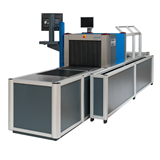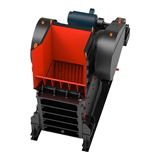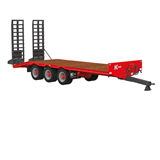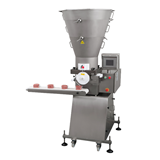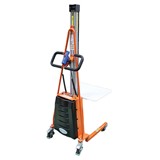AI and job losses in Australian industry, explore which roles are at risk, where opportunities are growing, and how to future-proof your workforce.
Key takeaways
- 1 in 3 Australian workers may be impacted by AI job transitions by 2030, particularly in administrative, retail and knowledge-based sectors.
- AI will create as many new roles as it disrupts, especially in augmentation, prompting demand for hybrid AI-human skills.
- AI is reshaping key Australian industries including manufacturing, mining, logistics, retail, agriculture, and healthcare—displacing routine roles while creating demand for tech-enabled, oversight, and data-driven positions.
- Manufacturing faces a critical crossroads, too many firms still rely on legacy systems, missing out on smart-factory gains.
- Early adopters report improved efficiency and work-life balance, but also note ethical and compliance concerns.
- Key actions for decision-makers: integrate AI strategically, upskill staff, engage workers in planning, strengthen governance and regulatory oversight.
Australian landscape: how real is the threat?
The scale of potential disruption
Recent Social Policy Group research (supported by ACTU) projects up to one-third of Australian workers could face periods of unemployment or transition by 2030 if AI adoption continues apace. Roles in routine data entry, admin, retail, and even mid-level professional jobs are in scope.
Examples include:
- A wine subscription sales team at Endeavour Group (Dan Murphy’s etc.) saw 121 roles replaced by automated systems.
- Telstra is adopting Copilot AI tools while cutting traditional enterprise roles, raising concerns that AI is masking deeper restructuring.
Not just layoffs, transformations underway
- A PWC report indicates that roles exposed to AI are seeing both automation and augmentation; job postings requiring AI skills rose 45–47% between 2019–2024, particularly in agriculture, hospitality and finance.
- Global research shows AI’s substitution effect is often offset by complementary gains, demand for human-centric skills like critical thinking and ethics is increasing.
Industries most impacted by AI in Australia
While AI is touching every sector, its impact is not uniform. Some industries are seeing significant disruption to job roles, while others are experiencing a wave of augmentation and opportunity. Here are the sectors most affected, and how.
- Manufacturing
- Smart factories are no longer just a global trend, Australian manufacturers are adopting AI for predictive maintenance, defect detection, and quality control. But with automation accelerating, routine roles such as machine operators, inspectors, and line managers are being redefined or reduced. Between 2011 and 2019, automation contributed to the loss of over 80,000 manufacturing jobs, and AI is expected to continue this trend unless proactive reskilling is prioritised.
- Mining and resources
- Giants like BHP and Rio Tinto are using AI to automate haul trucks, optimise energy usage, and predict equipment failures. The Pilbara’s autonomous operations are among the most advanced globally. While these innovations improve safety and efficiency, they’ve also reduced the need for on-site operational roles. However, demand for remote operations technicians, data engineers, and AI system managers is rising rapidly.
- Logistics and transport
- From Australia Post’s automated parcel sorters to Toll Group’s AI-driven routing systems, logistics is shifting fast. AI is helping reduce delivery times, fuel consumption, and driver fatigue, but it’s also impacting traditional dispatcher and route planner roles. Expect continued growth in jobs managing algorithms, telematics systems, and exception handling.
- Retail and customer service
- Major retailers such as Woolworths and Endeavour Group are implementing AI for customer service chatbots, demand forecasting, and shelf-stock optimisation. The downside? Over 120 sales roles were recently removed at Endeavour due to AI rollout. However, new roles in data analysis, personalisation strategy, and omnichannel support are emerging to meet evolving consumer expectations.
- Agriculture
- AgTech in Australia is booming, with start-ups deploying AI-powered drones, remote sensors, and automated irrigation systems. Rather than displacing labour, AI is filling workforce shortages and modernising regional operations. For example, Goanna Ag uses AI to help farmers reduce water usage while maintaining yields, leading to a shift in demand from manual farm labourers to farm tech operators and data agronomists.
- Healthcare and aged care
- While clinical roles are less susceptible, AI is streamlining admin-heavy tasks like triage, scheduling, and patient monitoring. Telehealth platforms now use AI to help predict patient needs and flag deteriorating conditions. However, many workers fear creeping surveillance and increased workload due to AI-enabled monitoring, especially in aged care, highlighting the need for clear WHS boundaries and consent protocols.
Key decision areas for businesses
Workforce strategy: who stays, who evolves, who shifts?
- Identify task exposure: map roles by routine vs discretionary AI-susceptibility (e.g. admin, basic clerical vs creative and strategic roles).
- Reskilling vs redundancy: IMD/ McKinsey-style splits suggest many jobs are not lost but evolve, focus your budgets on upskilling existing staff into AI-enhanced roles.
- Communication is key: early consultation with unions/teams builds trust and avoids backlash like at Telstra .
Compliance, ethical and safety oversight
- Recent Senate AI Inquiry recommended using WH&S frameworks to monitor risks from AI in the workplace.
- Build policies around:
- Human-in-loop assurance
- Transparent handling of worker data and surveillance flags
- Responsible AI principles aligned with services like the Albanese gov’t’s “Future Made in Australia”.
Productivity and ROI cases
- Case studies:
- Click Road, an Australian SME, slashed admin tasks using simple auto-reply and order tracking AI, no layoffs, hours cut.
- Amazon/MIT survey found workers saved ~245 hours per year thanks to automation, boosting safety and satisfaction.
- Risks: ROI uncertainty in AI means some organisations (e.g. those advertising few AI roles) are retrenching on internal talent and opting for vendor partnerships.
Sector spotlight: Manufacturing and fast food
Smart factories, or dumb strategies?
- Australian manufacturing lost 80,000 jobs from 2011–2019 due to automation.
- Now AI is the new paradigm. But many firms still run on legacy systems. AUMF analysis warns: without significant upskilling and investment, they risk being outpaced.
Practical move: Pilot deploy AI-powered predictive maintenance and QC in one line, measure yield gains, then scale.
AI at the drive-through
- Fast food chains are trialling voice-recognition and kitchen tools: e.g., KFC “Kacy”, Hungry Jack’s ordering bots.
- Risks: Entry-level job loss (i.e., teen workers) and reputational damage raised by ethics experts.
Workforce impact: Displacements, new roles, hidden costs
Displacements are happening quietly
- University of Technology Sydney warns AI already handles admin tasks in health and retail, often without employees noticing.
Emerging jobs and rising skills demand
- PwC profiling shows AI skills have ‘democratised’ across roles; demand grew in finance/insurance; degree prerequisites falling.
- World Economic Forum & Accenture highlight rising mid-skill roles: AI/complement experts, strategists, ethics officers, digital transformation specialists.
What decisions should you make now?
Define your AI maturity roadmap
- Conduct a “current-state” task audit.
- Identify low-risk pilots (e.g., automation tools for internal queries or QC).
- Partner with AI-savvy vendors or start in-house small-scale tools.
Create an inclusive workforce transition plan
- Involve staff and unions in co-designing AI adoption.
- Budget for reskilling across all job levels.
- Offer redeployment paths or early retirement incentives.
Develop governance and compliance systems
- Appoint a "workplace AI officer" to monitor ethics and WH&S.
- Align with emerging regulation, such as call for worker-centred codes from ACTU/Senate.
Monitor productivity and morale indicators
- Track KPIs: error rates, throughput, employee hours saved.
- Survey job satisfaction and mental health, especially at pilot stages.
- Refine human–AI workflows based on feedback.
Navigating challenges in practice
When implementing AI in industrial environments, you're likely to encounter several practical hurdles. Here’s what to watch for, and how to respond effectively:
- Legacy systems can make AI integration difficult and expensive. Many Australian manufacturers and logistics providers still operate on outdated platforms, which aren’t designed for smart automation. Start with a comprehensive IT audit and consider adopting modular AI tools that can integrate incrementally without full system overhauls.
- Skills shortages are a growing concern. With AI-specific roles still rare and often commanding premium salaries, many businesses find it hard to recruit or train staff with the right capabilities. Partnering with external AI solution providers, or offering blended training programs for existing staff, can help bridge the gap affordably.
- Resistance from staff is common, especially when AI is perceived as a threat to job security. Change can create anxiety, especially in sectors where automation has already replaced roles. Communicate early and clearly about the benefits to both business and workers, and involve your team in the planning process to build trust and buy-in.
- Ethical and privacy concerns need to be taken seriously, particularly as workplace surveillance and data-driven decisions become more common. Failing to manage these risks can lead to reputational damage or regulatory scrutiny. Establish an internal ethics committee and align your policies with workplace health and safety (WH&S) obligations to ensure AI systems are used responsibly and transparently.
The regulatory / compliance horizon
- ACTU and Senate calls for worker-centric AI legislation, embedding rights into digital age policies.
- Expect updates related to WH&S codes and AI risk classification tied to workplace safety incidents .
- Monitor Albanese government initiatives, including “Future Made in Australia”, which emphasise funding for reskilling and clean-economy tech.
The future outlook: disruption vs opportunity
- Global estimates suggest 14 million jobs displaced in 2025, but similar jobs generated in AI domains.
- In Australia, job postings requiring AI skills are expanding 45+%, driven by automation and augmentation alike.
- Skills like critical thinking, collaboration, ethics and digital literacy will matter more than degrees.
Conclusion
Yes, AI will lead to industrial job transitions and disruption in Australia, but whether that becomes loss or lift depends on your strategic choices. For professionals and decision-makers:
- Map your vulnerabilities and strengths.
- Pilot smart use-cases with ROI measurement.
- Embed staff in your transformation.
- Build frameworks to manage risk, fairness and compliance.
Get this right, and AI becomes a lever for productivity, employee engagement, and industry competitiveness, while safeguarding your workforce and reinforcing Australia's future-ready economy.
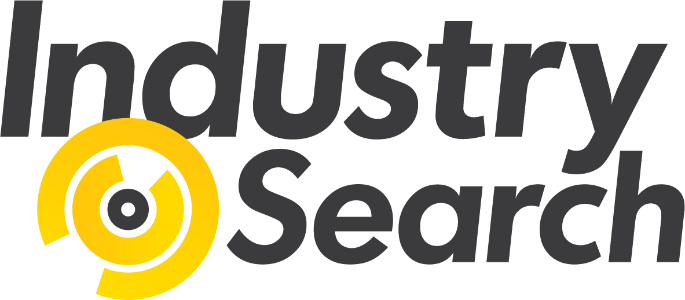


-160x160-state_article-rel-cat.png)
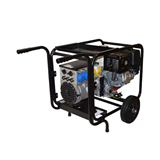




-160x160-state_article-rel-cat.jpg)


-160x160-state_article-rel-cat.png)


